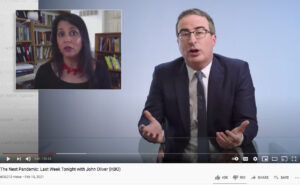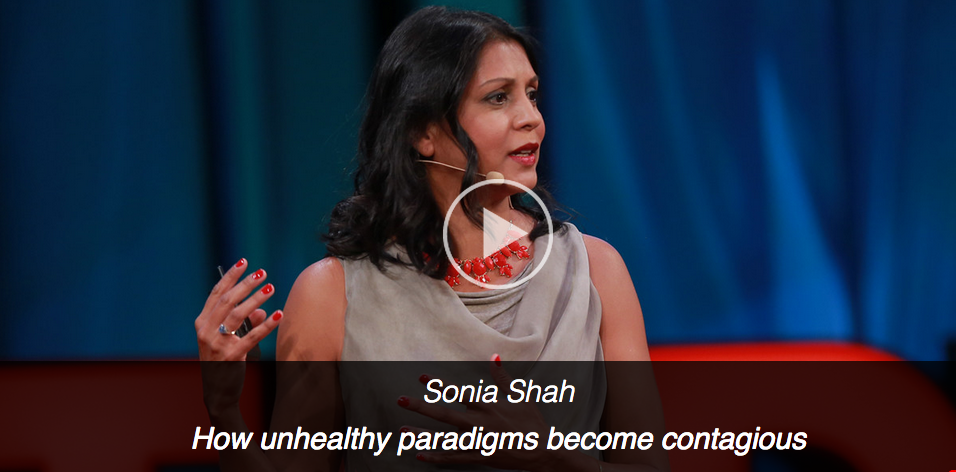An op-ed I wrote about a forbidden topic–the fact that many rural Africans do not want to sleep under the bednets we donate to them–appeared in this weekend’s Los Angeles Times. A prominent malariologist had this to say about it: “Excellent story – finally someone that dares to speak up. Mind you, your death sentence has been signed in Geneva by publishing this. You’ll be hated by the die-hard believers of nets…”
Perfect. That’s the kind of feedback that makes me feel like I’m doing my job. Check it out on this site, or at LA Times.
Also, in honor of last week’s World Malaria Day, see my article on greener methods of malaria control at Yale e360, and my blog post on the folly of square bednets for round huts at Ms. Magazine.













Dear Sonia:
Thanks for your article on mosquito nests and malaria in Africa. I have worked in many malaria control programs in Africa and have witnessed what you voiced. In 2007 I wrote an article for the American Mosquito Control Association titled “Nothing but Net Only works in Basketball” that fell on deaf ears after it was published. Unfortunetely, those who “look after” international public health appear to have lost site of their mission and promote something with questionable results at best. I’d be very happy to meet with you or anyone else and discuss this topic at length.
Thanks Manuel. You are not the first person I’ve heard from who has said the same thing!
all best,
Sonia
A malaria advisor for USAID emailed with this very appropriate quote from H.L. Mencken: ““For every complex problem there is an answer that is clear, simple, and wrong.” Love it.
The article in the LA Times reflected the reality of what is happening in many parts of Africa. But let’s not condemn nets: For now they are a great tool and save lives. However, they will only play one part in the endgame and not bethe key part. Nets are, shall I say, interim at best. Plasters to stop the bleeding, but not the cure for the ailment. For that we need more rigorous approaches. Keep up the work Sonia!
“nothing but nets”, “a net for a life” etc are advocacy points that somehow led to the LLIN prerogative in vector control. To state that LLIN’s on their own will not eradicate malaria or a ‘one size fits all” approach to malaria control in Africa will not go all the way are hardly controversial statements.
A child sleeping soundly under a net is far more likely to raise money than a guy in a spray suit. On a technical level there is not a great deal of good comparative research on different types of vector control interventions – and much less on mixed types (like IVM) of interventions.
The current “mandate” of the fight against malaria is to reach the very quantitative goal of universal coverage, which in terms of vector control has meant a net. It s been a massive campaign, it has been rolled out faster than anyone could supply proper evidence that what we have been doing was our best option or even how well these mass campaigns work.
But as an advocacy tool the LLIN has performed excellently. It would have been difficult to raise the same kind of funding with dipping nets and spray teams. Maybe this unprecedented campaign would never have gotten off the ground if it wasnt for the LLINs and malaria would have remained as neglected as ever.
Your article comes at a good time as we now have to look beyond the massive LLIN impact and begin to look at how to improve usage rates, how to combine vector controls to acheive sustainable low transmission rates etc – all the qualitative stuff that requires a studied approach and an adapted implementation – and, not least, on the ground technical assistance. This technical assistance is clearly still a bottleneck in driving malaria further towards elimination but at least there s now some kind of foundation to build on.
I take issue with your suggestion that bed nets don’t keep “the cultural preferences of the rural African villager in mind,” as if sub-Saharan Africa is one big, homogeneous culture. Are you criticizing bed nets as an effective public health tool? Or using bed nets as a straw man for some kind of cultural relativism clap trap?
Because the data you cite (though, it’s not so much cited, as whispered) isn’t particularly convincing. It “suggests” that, “at least in some places,” nearly half of Africans who have access to the nets refuse to sleep under them. That’s not nearly as convincing as your own words to the contrary – that, in fact, they can be effective, require little infrastructure, are easily distributed to remote locales, require no cold storage or expert training to use.
Insecticide-treated bed nets are a cheap, effective solution. Are they the only solution? Of course not. But what solution do you offer?
“Perhaps what we need is a whole new approach,” and let the “Africans” come up with their own, locally-sourced solutions. And so, now we’re back to the cultural axe grinding. LLIN’s work, but, maybe not well enough, so let’s scrap it, and let the Africans figure it out themselves.
I’ll tell you what. When the Africans figure out a way to solve the constant subway delays in NYC, I’ll be the first one to support their efforts to mastermind a solution to a distant problem. As long as it works.
In combination with indoor residual spraying, education, sound entomological research and affordable, high-quality medication, bed nets are a valuable tool in the fight against malaria. Who cares where the solution comes from? As long as it works.
Thanks for your comment, Papyrus. What I wrote is that bednets were not developed with the cultural preferences of rural African peoples in mind. They were designed by Western entomologists. As malariologist Janet Hemingway said to the Financial Times: “The problem with bednets is that they have been developed and designed by entomologists and we have tried to force people to use them.” (FT, 4/23/10) So in some locales, ITNs are well accepted, because there is already a bednet culture in place. In other places, there is no such culture, and the arrival of massive numbers of ITNs has been greeted with some skepticism. Education and awareness raising will surely help change this. But the whole point of the treated bednet is that it is cheap and easy to distribute. Once you add in all the education and training that is also required–because they are culturally foreign–the calculus changes. Then doesn’t it make sense to wonder what other options could have been brought to bear on the problem? I agree, it doesn’t matter where the solution comes from if it works. But if it isn’t working, then doesn’t it make sense to look at why?
best,
Sonia
Let s not get ahead of ourselves. The bed net was not developed by entomologists. The design is more or less a colonial times relic. Their capacity for holding and releasing an insecticide was. I think entomologist Janet Hemingway would agree. I also think she would agree that adaptive designs have been proposed and that the main barrier to pushing novel designs and concepts is not entomologists but the dynamics inherent to the current campaign.
We have gone through the one size fits all phase, which could be little different given the universal coverage in 2010 goal (advocacy leading science).
Hopefully from now on focus will shift from a global level to a local level, from quantity to quality.